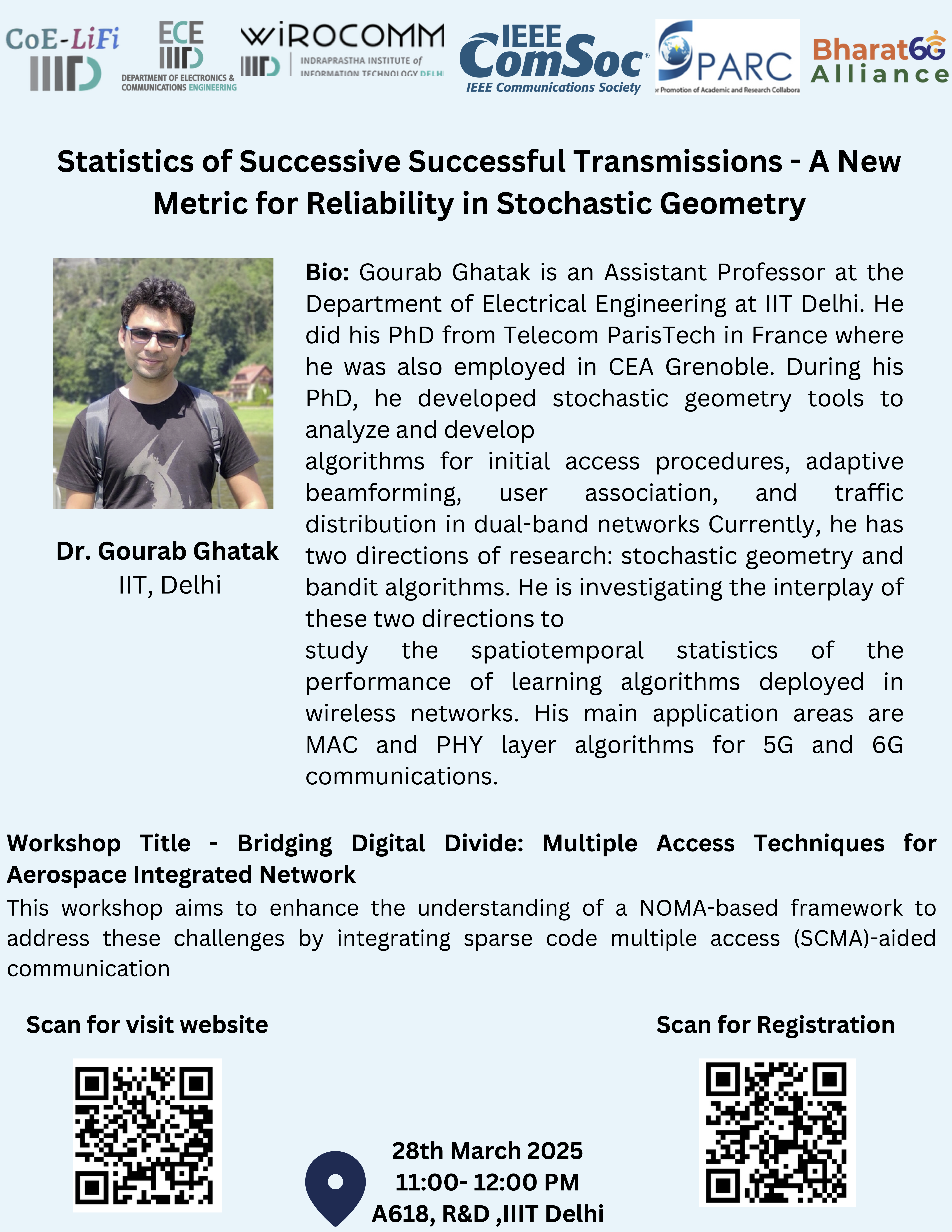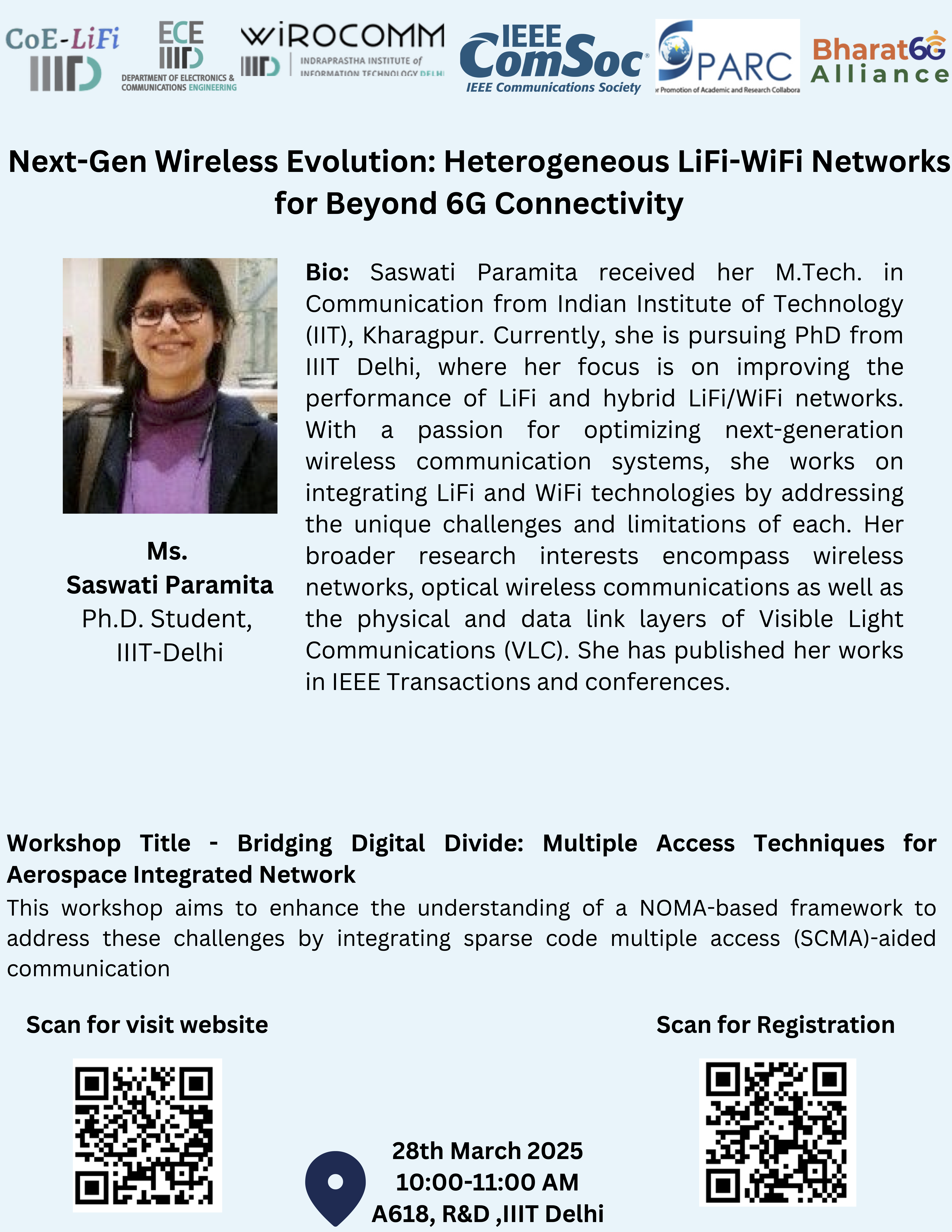Bridging Digital Divide: Multiple Access Techniques for Aerospace Integrated Network
This workshop explores advanced multiple access techniques for aerospace-integrated networks to bridge the digital divide. It covers different multiple access schemes focusing on their role in satellite-UAV-terrestrial communication. Key topics include resource allocation, interference management, and AI-driven optimization. Experts from academia and industry will discuss challenges and solutions to enhance connectivity, efficiency, and scalability in next-generation networks.
Date and Time
Location
Hosts
Registration
-
 Add Event to Calendar
Add Event to Calendar
Speakers
Ms. Saswati Paramita
Next-Gen Wireless Evolution: Heterogeneous LiFi-WiFi Networksfor Beyond 6G Connectivity
Biography:
Saswati Paramita received her M.Tech. in Communication from the Indian Institute of Technology (IIT) Kharagpur and is currently pursuing a Ph.D. at IIIT-Delhi. Her research focuses on enhancing the performance of LiFi and hybrid LiFi/WiFi networks by addressing their unique challenges and limitations. With a strong interest in next-generation wireless communication, she works on optimizing the integration of LiFi and WiFi technologies. Her broader research areas include wireless networks, optical wireless communications, and the physical and data link layers of Visible Light Communications (VLC). She has published her work in IEEE Transactions and leading conferences.
Dr. Gourab Ghatak
Statistics of Successive Successful Transmissions - A NewMetric for Reliability in Stochastic Geometry
Biography:
Dr. Gourab Ghatak is an Assistant Professor in the Department of Electrical Engineering at IIT Delhi. He earned his Ph.D. from Telecom ParisTech, France, and was also associated with CEA Grenoble. His doctoral research focused on developing stochastic geometry tools for analyzing and designing algorithms for initial access, adaptive beamforming, user association, and traffic distribution in dual-band networks. His current research spans two key areas: stochastic geometry and bandit algorithms, exploring their interplay to understand the spatiotemporal performance of learning algorithms in wireless networks. His primary applications lie in MAC and PHY layer algorithms for 5G and 6G communications.



